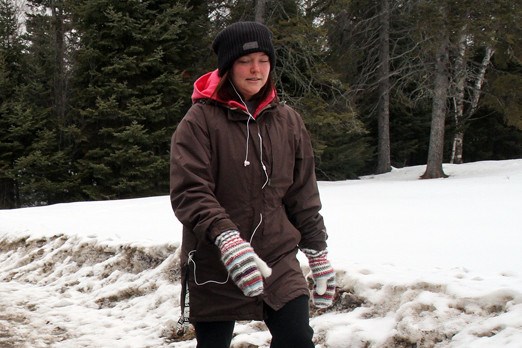The city's trees are a valuable commodity that need to be protected and nurtured, says the author of a study looking at Thunder Bay's urban forest management strategy.
"Thunder Bay has room to improve," said Skip Kincaid of the Davey Resource Group. "Every city has room to improve their urban forest program. But in terms of the budget that they're dealing with here, I think they're doing an excellent job.
"You drive down the streets in Thunder Bay and a lot of the streets that have trees you can tell that they're well-cared for and that there's some attention being paid. But in any city, especially in a city that falls in the lower-third of the middle tier in terms of budgeting for trees, there's always room to improve."
That was certainly the sentiment of outspoken at-large Coun. Aldo Ruberto, who weighed in on the subject, pointing to the Intercity and Arthur street areas as thoroughfares that could use aesthetic improvement through greening.
"All our major routes – Arthur Street, Cumberland and Memorial ... are actually kind of ugly. They can be enhanced and this plan sort of points that out," Ruberto said.
"When you do look at the report ... I'm hoping there are some positive recommendations, which include not only trees, but shrubs and other plant life to enhance those areas that are particularly ugly in that area of the city."
Under the plan, which presented council with 144 recommendations, Thunder Bay would be divided into seven to 10 management zones, maintenance would shift from reactive to proactive, with each publicly owned tree being inspected and properly pruned at least once during a seven- to 10-year cycle.
In terms of net value, city-owned trees are worth about $851,000 to the economy each year, after the $700,000 cost to maintain them is factored into the equation.
They also remove 13,525 kilograms of pollutants from the air, retain 78,606 cubic metres of storm water runoff from city sewers and reduce carbon dioxide levels by 2.5 million kilograms annually.
Current River Coun. Andrew Foulds said while he knew public trees were valuable, seeing an actual number attached was a bit shocking.
"The magnitude surprised me and I was really intrigued by the model (Kincaid) presented to quantify how valuable they are because it is much more then that tree is beautiful," Foulds said.
Another key recommendation Kincaid made is for the city to make better use of the experts it already has on staff, including city forester Shelley Vescio, and get them involved in the planning when improvements are made, especially along sidewalks and roadways.
"And they should also review development plans so there's some thoughtful consideration given to trees on private property as well," Kincaid said.
Ultimately he'd like to see the city, which spends three-tenths of a per cent of its annual budget on forestry management, create a healthy, sustainable urban forest that adds to the economic, social and environmental vitality of the city.
"Frankly, I knew we were on the low end of investment in urban forest, but I didn't think we were that low," Foulds said. "I was surprised. We saw the cost-benefit analysis, the two-for-one, and I guess what I'm going to be looking for is what is the appropriate investment to maximize that cost-benefit analysis, to maximize our storm-water management, to maximize our aesthetics, to maximize our energy.
"This is really important. It's something I think we largely take for granted because we're surrounded by forests. But it doesn't matter that we're surrounded by forests. The urban forest plays a very critical role and there's value in that."
Thunder Bay has two full-time and one temporary position devoted strictly to the urban forest, with help when needed coming from parks department staff.
The study outlines the type of trees found in the city, with ash, maple and linden species topping the list. It also looked at tree sizes, noting that while there is an abundance of young trees, much of the old-growth, large tree population is in short supply.
There are more negatives, Kincaid said.
"In the last five years the number of trees removed by the City of Thunder Bay has exceeded the number of trees planted by the City of Thunder Bay," he said. "If the trend continues it doesn't bode well."
Kincaid would also like to see the urban forest have a higher profile and at least one crew of expert tree climbers for maintenance purposes.
A further report from administration on whether or not to implement any or all of Kincaid's recommendations is due back before council in May. A pair of open houses on the forest management plan will also be held before administration delivers its report.
Follow Leith Dunick on Twitter: @LeithDunick
